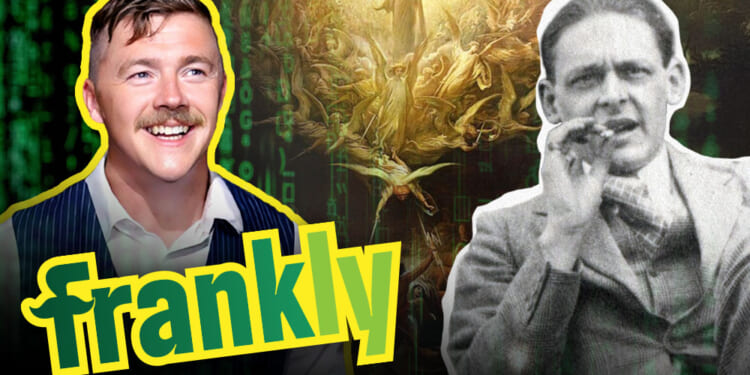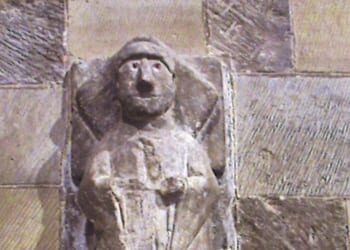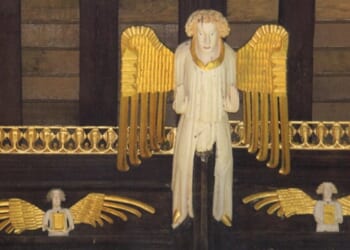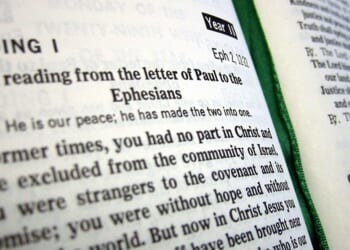(LifeSiteNews) — Why does the Vatican teach the idols of the liberal state religion instead of Catholic doctrine – and why does our modern liberal world seem identical in its worship of these totems to a new paganism?
To answer this question I have begun a new series on my show, Frankly. It is an explanation of the masterpiece of Pope St. Pius X, Pascendi Dominici Gregis, which demonstrated why “modernism is the synthesis of all heresies.”
If we understand what “modernism” is, where it came from, and what it sought to replace with itself, we can better understand the state we are in today – which is a crisis.
What is more, Pascendi – rendered as a “Catechism on Modernism” in book form – not only explains the causes and effects of modernism. It also teaches us the remedy for this cultural malaise.
This latest episode of Frankly poses the question of “What is modernism?” and begins to answer it by looking at the time that Pascendi was written – 1907 – and the literary and cultural figures who came to prominence as the leading modernists of the early 20th century.
This introduction will, I hope, explain some of what is meant by the modern idea which Pope St. Pius X condemned in so much luminous detail.
When we read Pascendi today it seems remarkable that anyone could have so accurately described the causes and effects of the confusion, chaos and moral collapse we call the new normal today.
Making sense of the modern world
Pascendi is long and difficult in parts. It is in my view the most profound and accurate document on the modern condition ever written. I hope to break it down in this series, relating its many brilliant points to real life developments, to political and social currents, and by doing so invite you to read it yourself.
This “Catechism on Modernism” is more than just a guidebook to dystopia sold as an earthly paradise.
To read it is to be struck by the difference between the true religion and the new religion. It was reading Pascendi, the Catholic social teachings of Pope Leo XIII, and the Syllabus of Errors of Pope Pius IX which had this effect on me.
To cultivate your mind in the light of these works is to encourage your growth in the Catholic faith. It is also to realize that the Catholic Church has all the answers in its traditional teaching.
Pope St. Pius X warned in 1907 that men with bad designs were acting within and outside the Church to supplant its teachings with the beliefs of the modernists. What are these beliefs, and how do they explain the crisis in the Church and state today?
I say in this episode that modernism is at root the replacement of God with man. In place of Christ, the self. In place of reality, my inner life of fantasy and of imagination.
It leads to a complete moral and epistemic nihilism – in which human life has no essential purpose or value, and there are neither facts nor reality.
I add it is remarkable that the modernists like to call the faithful “superstitious” for believing that Christ is the point in time that makes sense of all mankind, for example.
Their enlightened solution is to replace Him with nothing.
I point out that this modern cult is a sort of paganism, being concerned with erecting idols to worship which are really just projected aspects of the self. Modernism is a cult of vanity with many expressions, but it is a circular one, promising liberation from morality and meaning and delivering man thereby into a trap – himself, alone, which he cannot escape without divine help.
This is the reason, I say, that modernist heroes are typically self-obsessed, self-destructive, and, in more than a few cases, suicidal. Self-destruction is seen as heroic, a valiant struggle to annihilate oneself before the godless absurdity of existence does you in first.
I note the example of T.S. Eliot, who was pronounced “dead” by the modernist writer Virginia Woolf when she found out in 1928 that he believed in God. Eliot converted to Anglo-Catholicism because he saw the limitations of man in his modern self-obsession, and his desire for truth led him to Christ. This was scandalous to Woolf. Despite being declared dead, Eliot lived for almost four more decades, whilst Woolf committed suicide thirteen years later.
In our times, we can see the thread of self-destruction still unites the cults of the liberal state religion. The celebration of mortal sin in the rainbow flag. The self-mutilation vaunted as heroism in the diabolical “trans” cult. The nation-dissolving human trafficking partnership between crime, state and NGOs which is marketed as the right to migrate. The climate cult, which demands the reduction of the human population and the destruction of unborn life as a sacrifice to a known falsehood, which sees mankind as a sort of curse on the earth itself.
Modernism is merely a new form of an old rebellion. It is, like all the revolutionary spasms, a calculated insult to God and man, aiming at the replacement of the natural order and natural justice with its disordered self. A selfish cult with many expressions but with one true face – which is that of the enemy of mankind – modernism can be understood as the product of the refinement of the process of sin.
Sin is condemned not because God despises fun, but because sin is the free choice of self-destruction by means of unrestrained desire. Modernism has many aspects. I look only at the literary one in my introduction, but throughout the series on Pascendi we will consider the others: the arts, politics, and developments in the Church in a period defined by the cult of the self.
The answer, of course, is to restore our civilization in Christ. Pascendi also shows us how to do this, with practical advice.
‘Exterminatrix of all heresies’
As we turn to the work of the restoration of all in Christ – in Church and in state – we should remember that the Help of Christians is there for us.
Among the titles of the Holy Mother of God, Our Lady is also “exterminatrix of all heresies,” as I am reminded today by Sean Wright.
When we take up our daily Rosary – the weapon which secured the victory at Lepanto – we should remember that we are not alone in the good fight against heresy. However dark the times, and no matter how dreadful the odds, Our Lady has kept her promises to those who pray to obtain them.
















